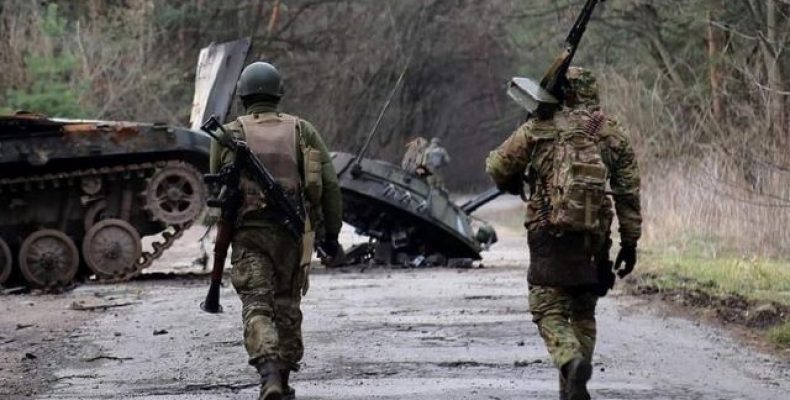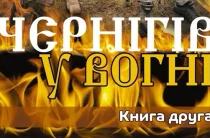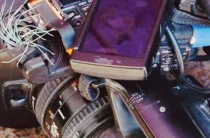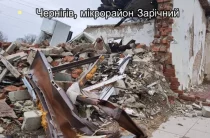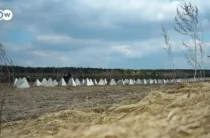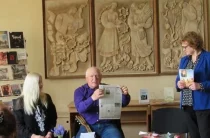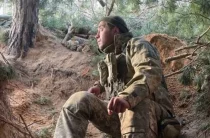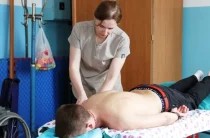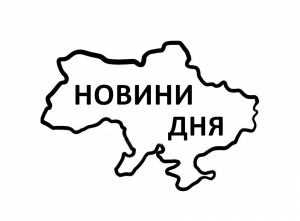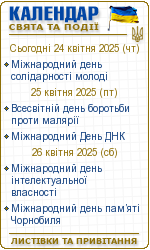Першого квітня Генеральний штаб ЗСУ повідомив про відновлення контролю над низкою населених пунктів Київської та Чернігівської областей. Силам ЗСУ вдалось вибити противника з їхніх позицій. На Поліському напрямку в той день вдалося звільнити одразу 15 населених пунктів, на Сіверському – ще 13.
До переліку звільнених територій потрапили і села Стара Басань та Нова Басань. Обидва населених пункти були в окупації з перших тижнів повномасштабного вторгнення військ Російської Федерації на територію України. Місяць страху, терору та невідомості для місцевих мешканців. Місяць, за який селяни втратили своє майно, здоров’я, а деякі – життя.
Обабіч шляху
Стара Басань – село з давньою історією. Засноване ще в ХІІ столітті, населений пункт поступово обростав своїми традиціями, формував власну “екосистему”, в якій комфортно почувались як місцеві, так і нечасті приїжджі, яких могли привабити пейзажі та гідрологічний заказник “Старобасанський”.
На відміну від “молодшого брата” – Нової Басані, що була заснована на три століття пізніше, Стара Басань знаходиться дещо обабіч основних транспортних шляхів. Це власне й врятувало село від тотального руйнування росіянами, що наступали у березні на Київ, пересуваючись в тому числі цивільними трасами. Тож пощастило, старобасанськими вулицями техніка противника їздила не так часто, як новобасанськими. Тут вони мали скоріше місце для привалів і перегрупувань. Що, однак, не заважало їм грабувати оселі селян час від час розстрілюючи місцеві хати.
Одна така нічим не спровокована стрілянина відбулась в останні дні окупації села, 27-го березня.
“Я біля грубки стояла. Почула – їдуть. Думаю, побіжу зараз у коридор і ляжу. Відкривати двері, аж тут скло полетіло. Три вікна – все повилітало… Двері таки відкрила, тут диму повно. Я думаю , не дай Бог, загорілася хата, злякалась дуже. Бігом повідкривала двері і вискочила у верандочку… Потім глянула, а по стінам одні дірки”, – згадує місцева мешканка Катерина Гончарук історію “зустрічі” своєї оселі з російськими кулеметами 27-го березня.
За час, який довелось провести по сусідству з російськими військами пані Катерина вивчила негласні правила – у вікна не виглядати, на двір виходити лише коли навколо нікого нема, до техніки окупантів не підходити: “Вони бува як їдуть по селу, то тільки чутно “тра-та-та-та-та”. З автоматів чи що. Наче попередження роблят, що вони їдуть. Значить не виходьте з хати чи ще куди. Уже всі тікають з дворів, нікого ніде нема… Вони бувало за день по три-чотири рази так їздили. І все по центральній вулиці нашій”.
Жінка зізнається, фактично весь місяць село ховалось у погрібах, боячись навіть за водою вийти. Враховуючи, що в населеному пункті проживало трохи більше півтисячі осіб, в переважній більшості похилого віку, влаштовувати якийсь спротив чи диверсії там просто не було кому. Тож про причини подібної агресії по відношенню до цивільних залишається лише здогадуватись.
Смертельний постріл
Ця ж колона російської техніки, що відкрила вогонь по оселі Катерини Гончарук, не оминула й будинок ще одної мешканки села – Тетяни Данильченко. Тоді в неї ховались ще й власні діти з родинами. Приміщення зрешетили кулями. Один з пострілів виявився смертельним для 33-річної Валентини Супрун, доньки пані Тетяни.
“Снаряд пролетів через усю хату і вбив мою сестру. Потрапив у шию. Поранило осколками і маму, і мене, всіх потрохи. Добре, що діти були в дальній кімнаті на підлозі”, – переповідає події того злощасного дня друга донька жінки Олена Кот.
Так, того дня через безпідставний обстріл росіян мирних мешканців без матері залишилось двоє дівчат – 12 і 7 років.
Олена Кот пояснює, взагалі їм пощастило, що за час вимушеного “сусідатства” вже звикли від проїздів російських військових колон ховатись або в підвалах, або хоча б лягати на підлогу, аби бути максимально низько та не потрапити під “лінивий вогонь” росіян. Якби не це, жертв могло б бути набагато більше: “Ми навіть поховати сестру одразу не змогли. Спочатку на подвір’ї тіло прикопали, а коли вже росіяни відступали – захоронили по-нормальному, на цвинтарі”.
Однак навіть під час перепоховання жінки її родичам довелось знову ховатись на місцевому болоті, оскільки по краю села рухалась одна з останніх колон російської техніки, “ліниво” пострілюючи по хатам мирних селян.
Russian machine guns fire at houses.
On April 1, the General Staff of the Armed Forces of Ukraine reported the restoration of control over several settlements in the Kyiv and Chernihiv oblasts. AFU forces managed to dislodge the enemy from their positions. On the Polissia direction that day, 15 settlements at once were liberated, and another 13 on the Siversk direction.
The villages of Stara Basan and Nova Basan were also included in the list of liberated territories. Both settlements had been under occupation since the first weeks of the full-scale invasion of Ukraine by Russian Federation troops. A month of fear, terror, and uncertainty for the locals. A month when locals lost their property, their health, and some lost their lives.
On the roadside
Stara Basan is a village with an ancient history. Founded back in the XII century, the village gradually acquired its own traditions, and formed its own ecosystem, which was comfortable for both locals and infrequent visitors, who could be attracted by landscapes and the Starobasansky hydrological reserve.
Unlike its “younger brother”, Nova Basan, which was founded three centuries later, Stara Basan is located somewhat distant from the main transportation routes. This is what saved the village from total destruction by the Russians, who attacked Kyiv in March, moving along civilian roads. Therefore, it was fortunate that enemy vehicles did not drive through Stara Basan streets as often as the Nova Basan streets. This is where they could pause and regroup. That, however, did not stop them from looting the houses of villagers and shooting up the local houses from time to time.
One such unprovoked shooting happened in the last days of the occupation of the village, on March 27.
“I was standing by the stove. I heard them coming. I was going to run into the corridor and lie down. I opened the door, and that’s when the glass burst. Three windows were blown out… I opened the door and there was a lot of smoke. I thought God forbid, the house was on fire, I was very scared. I ran and opened the door and jumped out into the small veranda… Then I looked and saw that there were a lot of holes in the walls,” Kateryna Honcharuk, a local resident, recalls how her house got “acquainted” with Russian machine guns on March 27.
During the time she had to stay near Russian troops, Kateryna learned the unwritten rules: never look out of windows, go out into the courtyard only when no one is around, do not approach the invaders’ vehicles: “They used to drive by the village, and all you could hear was “tra-to-to-to”. From automatic rifles or something. It is as if they were announcing that they are leaving. So that we wouldn’t go out of the house or anything. Everyone is already running inside, there’s no one outside left. They used to do this three or four times a day. And all along our main street.”
The woman admits that for an entire month the entire village hid in the cellars, afraid even to go out for water. Considering that there were just over half a thousand people in the village, most of them elderly, there was simply no one there to put up any kind of resistance or sabotage. Therefore, we can only guess at the reasons for this aggression against civilians.
Fatal round
The same convoy of Russian equipment that opened fire on Kateryna Honcharuk’s house did not go around the house of another resident of the village, Tetyana Danylchenko. Her children with their families were also hiding in her house at the time. The house got riddled with bullets. One of the rounds turned out to be fatal for 33-year-old Valentyna Suprun, Tetyana’s daughter.
“The bullet flew through the whole house and killed my sister. It hit her in the neck. Shrapnel wounded my mother and me, all of us, a little bit. It’s good that the children were in the back room on the floor,” the woman’s other daughter Olena Kot retells the events of that ill-fated day.
So, on that day, because of the groundless shooting of civilians by Russians, two girls, 12 and 7 years old, lost their mother.
Olena Kot explains that they were generally lucky that during their forced neighborhood with the Russian military they had already become accustomed to hiding either in basements or at least lying on the floor to be as low as possible and not to be hit by the sporadic Russian gunfire. Had it not been for that, there could have been many more casualties: “We could not even bury our sister immediately. First, we buried the body in the yard, and then, when the Russians were already retreating, we buried her properly, in the cemetery.”
However, even during the reburial, her relatives had to hide in the local swamp again, because one of the last columns of Russian vehicles moved along the edge of the village, taking potshots at the houses of peaceful villagers.
There was no military infrastructure that could have been a target of gunfire in or around the village. The aggression and the resulting shooting of civilians were unprovoked. There was no one to provoke it. There were very few people left in the village. Accordingly, such activity was in direct violation of Article 51 of the Additional Protocol (I) to the Geneva Conventions, which states that the civilian population as such, as well as individual civilians, shall not be the object of attack. The actions of the Russians are also considered to be a violation of the laws and customs of war under part 1 of article 438 of the Criminal Code of Ukraine. So, despite the long-term nature of the process of recording the evidence, Ukrainians should continue to collect facts about Russian war crimes. This will help bring the perpetrators to justice as a result.











